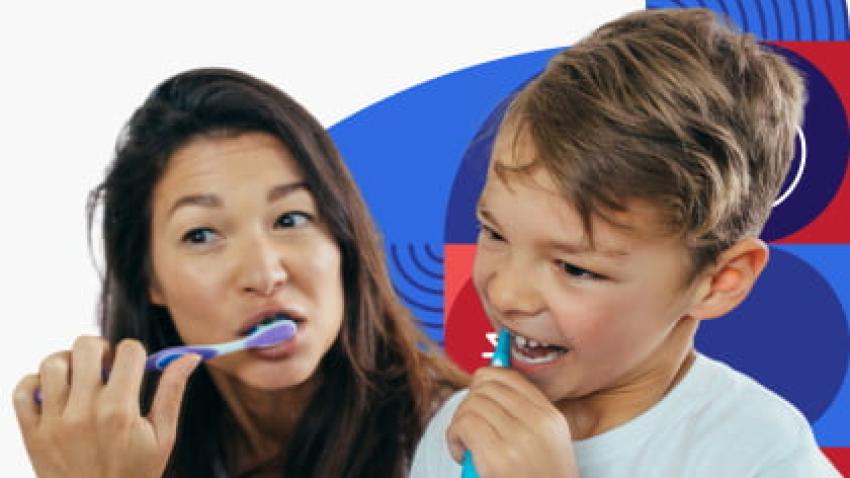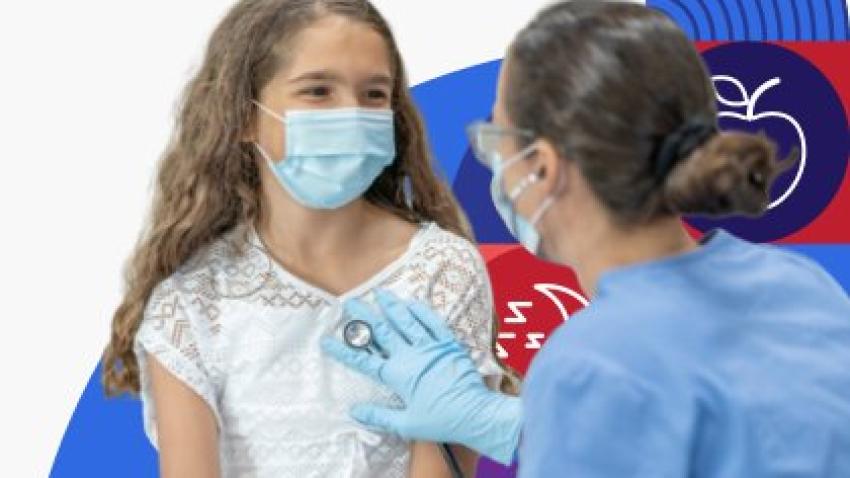Doctor Visits
Get Your Child’s Vision Checked

The Basics
Overview
It’s important for your child to have their vision checked at least once between ages 3 and 5 years, even if they don’t show signs of eye problems. The doctor or nurse can help make sure your child’s vision develops normally. They can also help catch eye problems early.
Healthy eyes help your child grow, learn, and explore the world around them — and vision checks are a great way to help protect your child’s eyes.
What are common eye problems in children?
Doctors can treat some common eye problems if they're found early enough. For example:
Other eye problems — like being nearsighted or farsighted — can be corrected with glasses or contact lenses. Eye problems like these are called refractive errors. Read more about refractive errors.
Is my child at risk for eye problems?
Anyone can have eye problems — but if your family has a history of childhood eye problems, your child may be more likely to have them too. Be sure to talk to the doctor about eye problems that run in your family.
Eye Exams
Eye exams are part of regular checkups.
The doctor or nurse will check your child’s eyes during each checkup, beginning with your child’s first well-baby visit.
When your child is around age 3 or 4 years, the doctor or nurse will do a more complete eye exam to make sure your child's vision is developing normally. If there are any problems, the doctor may send your child to an eye doctor.
Take Action
See a Doctor
Take these steps to help protect your child’s eyes and vision.
Talk to your child’s doctor.
Ask the doctor or nurse if there are any problems with your child’s eyes.
If the doctor recommends a visit to an eye care professional:
- Ask the doctor for the name of an eye doctor who is good with kids — you can also use these tips to find an eye doctor
- Write down any information about your child’s eye problem
- Plan your child’s visit to the eye doctor
Cost and Insurance
What about cost?
Under the Affordable Care Act, insurance plans must cover vision screening for kids. Depending on your insurance plan, your child may be able to get screened at no cost to you. Check with your insurance company to find out more.
Medicaid and the Children’s Health Insurance Program (CHIP) also cover vision care for kids. Learn more about Medicaid and CHIP.
If you don’t have insurance, you may still be able to get free or low-cost vision screening for your child. Check these websites for free or low-cost eye care programs for children:
To learn more, check out these resources:
- Free preventive care for children covered by the Affordable Care Act
- How the Affordable Care Act protects you
- Understanding your health insurance and how to use it [PDF - 698 KB]
Watch for Eye Problems
Look out for problems.
Schedule an eye exam for your child if you notice signs of an eye problem, like if your child’s eyes:
- Look crossed
- Turn outwards
- Don’t focus together
- Are red, crusted, or swollen around the eyelids
Prevent Eye Injuries
Protect your child’s eyes.
- Don’t let your child play with toys that have sharp edges or points
- Keep sharp or pointed objects, like knives and scissors, away from your child
- Protect your child’s eyes from the sun with kids’ sunglasses that block 99 to 100 percent of UVA and UVB rays
- Keep chemicals (like household cleaners and bug spray) in places that kids can't reach
- Make sure your child wears the right eye protection for sports
Vision Development
Help develop your child’s vision.
It takes skill to match up what we see with what we want to do — like when we want to bounce a ball or read a book.
Here are some activities that can help your child develop vision skills:
- Read to your child and let your child see what you are reading
- Play with your child using a chalkboard, finger paints, or blocks
- Take your child to the playground to climb the jungle gym and walk on the balance beam
- Play catch with your child
Content last updated May 22, 2023
Reviewer Information
This information on childhood vision screening is adapted from materials from the Agency for Healthcare Research and Quality and the National Eye Institute.
Reviewed by:
Holly Russo
Digital Communications Specialist
National Eye Institute
National Institutes of Health (NEI/NIH)


